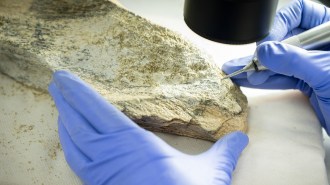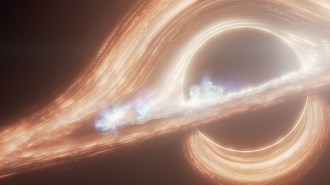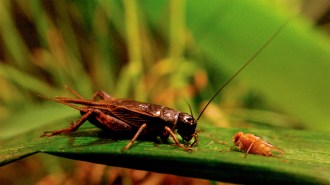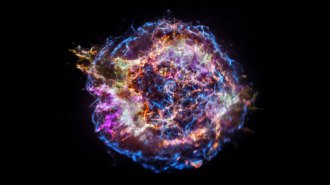All Stories
-
 Health & Medicine
Health & MedicineTreating male partners along with women may help stop bacterial vaginosis
In a clinical trial, treating both partners in a relationship significantly reduced the likelihood of recurrence of bacterial vaginosis.
-
 Math
MathThe einstein tile rocked mathematics. Meet its molecular cousin
Chemists identify a single molecule that naturally tiles in nonrepeating patterns, which could help build materials with novel electronic properties.
-
 Archaeology
ArchaeologyHuman ancestors made the oldest known bone tools 1.5 million years ago
The excavation of bone tools at Olduvai Gorge in Tanzania expands the range of ancient hominids’ cultural innovations.
By Bruce Bower -
 Astronomy
AstronomyThe Milky Way’s black hole is constantly bubbling
The disc of plasma surrounding the black hole at the heart of the Milky Way is constantly emitting flares both large and small.
-
 Animals
AnimalsCrickets and flies face off in a quiet evolutionary battle
Male crickets in Hawaii softened their chirps once parasitic flies started hunting them. Now, it seems, the flies are homing in on the new tunes.
By Jake Buehler -
 Astronomy
AstronomyCitizen scientists make cosmic discoveries with a global telescope network
On balconies and in backyards, Wi-Fi–enabled telescopes are connecting astronomy enthusiasts across six continents.
-
 Health & Medicine
Health & MedicineThese scientists have a plan to demystify the vaginal microbiome
Vaginal microbes play a huge role in overall health, but researchers know relatively little about them. Citizen science could help change that.
-
 Physics
PhysicsThe sound of clapping, explained by physics
The “Helmholtz resonator” concept explains the frequencies of sound produced by clapping the hands together in different configurations.
-
 Genetics
GeneticsA child who got CAR-T cancer therapy is still disease-free 18 years later
The long-term survival of a patient with neuroblastoma suggests the personalized cancer treatment may work for solid tumors, not just blood cancers.
-
 Astronomy
AstronomyThe universe’s first supernovas probably produced water
Water may have formed less than 200 million years after the Big Bang, suggesting some conditions for life existed far earlier than previously thought.
-
 Planetary Science
Planetary ScienceA private mission to Venus aims to look for signs of life
If successful, Morning Star would be the first private mission to another planet and the first in over 30 years to directly measure Venus’s clouds.
-
 Health & Medicine
Health & MedicineHear how people re-learn to live with emotions during brain stimulation
In the fourth episode of The Deep End, Jon Nelson and others describe dealing with emotions they haven’t felt in a long time.